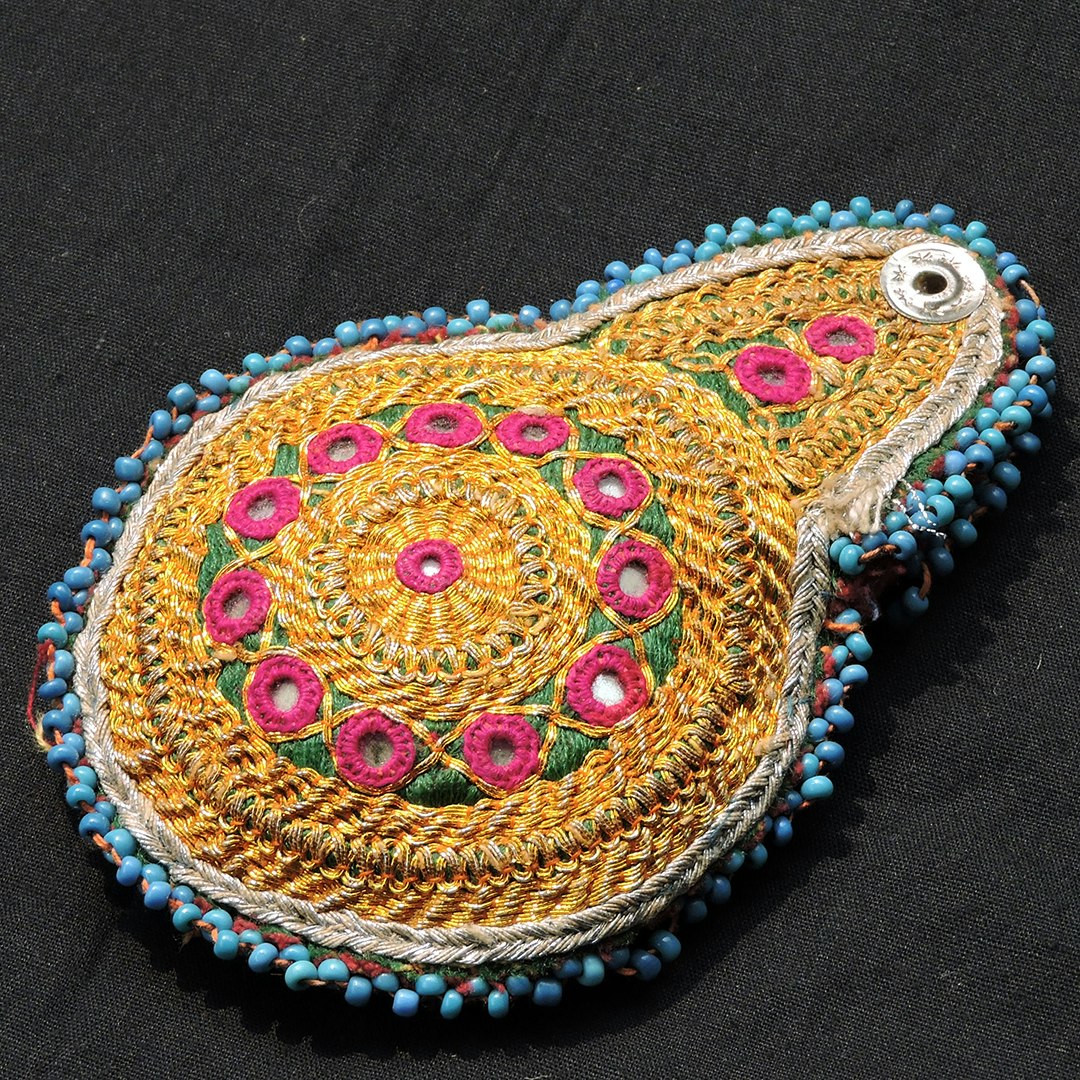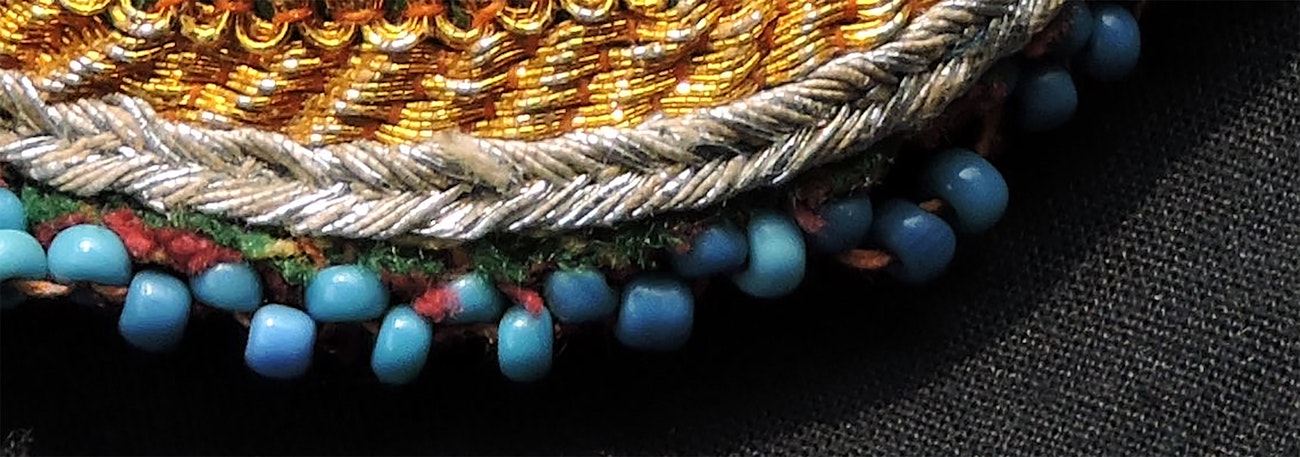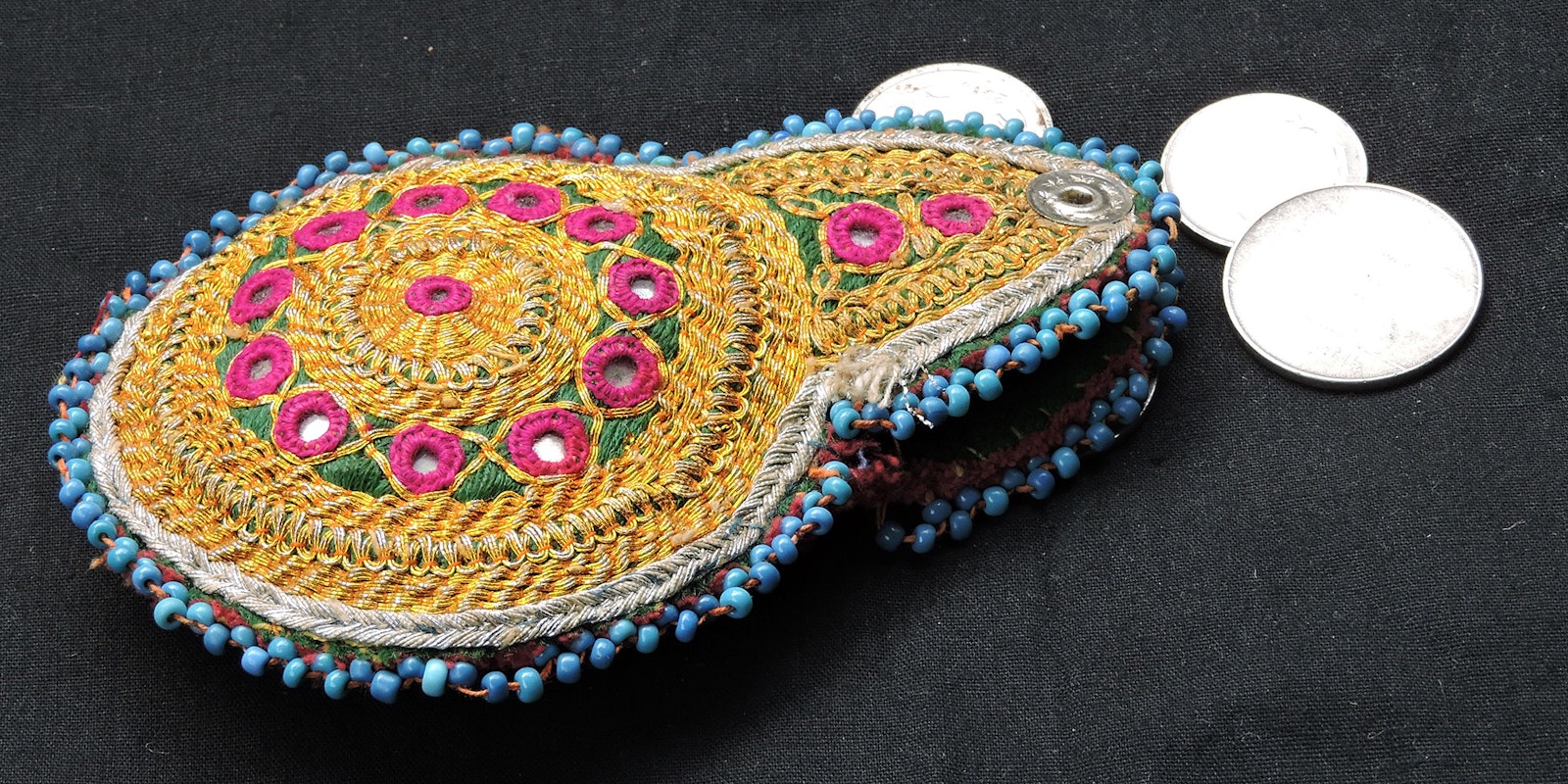It is very strange how one comes across odd pieces of embroidered items. It was at an international women’s entrepreneur summit at a hotel, a two-day event organized by the ladies’ wing of India’s premier trade body, when I came across this piece. Always a sucker for women’s small enterprise products, I faithfully made a trip.
It was the international section that attracted my attention, and even more so, the ladies from Afghanistan. It was great fun browsing through their enormous collection of wares. Of course, the prices were high, but after searching through modern embroidery and contemporary dresses, I chanced on a huge, unopened bag with many smaller embroidered pieces.
The young girl at the desk, who was helping her mother and who had a brother for company, gladly opened the bag. Out came a large variety of little purses and bags. The one shown here stood out for its unusual shape. I inquired, and she promptly said it was a coin bag, for that would have made it more attractive for sale. I kept asking for information, and her brother chimed in to say that it was used to keep surma, or kohl, to line the eyes with. The little purse was mine.
 The other side of the surma dani is essentially the same design. Only the button closure of the bag can identify the sides.
The other side of the surma dani is essentially the same design. Only the button closure of the bag can identify the sides.
Later, I started to research for more information about the little purse, or surma dani. I was told by an antique dealer from Afghanistan that it was indeed a bag carried by men to keep kohl. Kohl for the eyes is an important accessory for men, and they devise various contraptions in which to keep it. Most are crafted in silver or brass. I suspected that this bag had probably been made in cloth and embroidered profusely because it has tribal antecedents.
Abdul Hameed, who runs @mako_arts_and_crafts on Instagram, traced the bag to the Pashtoon, or Pathan, tribe of Qarabagh, Ghazni region of Afghanistan. The work is called zarduzi, meaning embroidering done using silver threads. The really old pieces have the embroidery done with real gold threads, or zari. Zari were made using silver wound on silk, or cotton, threads and then plated with gold. My piece was stitched with faux gold zari, which was made with copper.
 Detail of the beadwork on the edge of the surma dani
Detail of the beadwork on the edge of the surma dani
The inside of the surma dani is lined with suede cloth and has a button affixed to it. The ends are finished with tiny, blue beads, which are characteristic of this region. Little mirrors are placed and finished with embroidery in contrasting colors. The stitching around the mirrors is done using a needle. The ornamentation of golden threads, possibly store-bought or handmade, are affixed to the purse using couching stitches. The design is the same on both sides.
I find it fascinating how a carefully made item for personal use from a remote area in another country ends up in a sophisticated hotel!
Chitra Balasubramaniam writes, collects, and experiments with textiles, and follows her passions by writing about food, travel, and heritage. She dabbles with stock-investment analysis and research. She also runs a small travel guide at visitors2delhi.com. Find her on Instagram as @visitors2delhi.
Originally published October 5, 2020; updated August 18, 2021; updated October 20, 2023.

